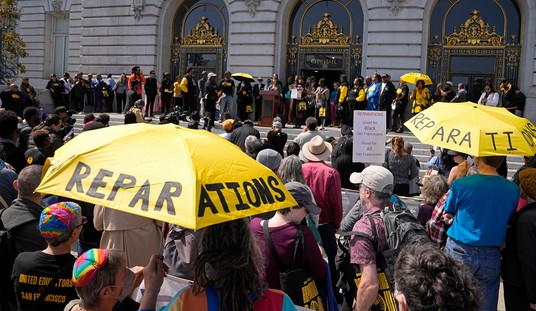During bad times, the blame game is the biggest game in Washington. Wall Street "greed" or "predatory" lenders seem to be favorite targets to blame for our current economic woes.
When government policy is mentioned at all in handing out blame, it is usually blamed for not imposing enough regulation on the private sector. But there is still the question whether any of these explanations can stand up under scrutiny.
Take Wall Street "greed." Is there any evidence that people in Wall Street were any less interested in making money during all the decades and generations when investments in housing were among the safest investments around? If their greed did not bring on an economic disaster before, why would it bring it on now?
As for lenders, how could they have expected to satisfy their greed by lending to people who were not likely to repay them?

The one agency of government that is widely blamed is the Federal Reserve System-- which still keeps the heat away from elected politicians. Nor is the Fed completely blameless. It kept interest rates extremely low for years. That undoubtedly contributed to an increased demand for housing, since lower interest rates mean lower monthly mortgage payments.
But an increased demand for housing does not automatically mean higher housing prices. In places where supply is free to rise to meet demand, such as Manhattan in the 1950s or Las Vegas in the 1980s, increased demand simply led to more housing units being built, without an increase in real prices-- that is, money prices adjusted for inflation.
What led to a boom in housing prices was increased demand in places where supply was artificially restricted. Coastal California was the largest of these places where severe legal restrictions on building houses led to skyrocketing housing prices. Just between 2000 and 2005, for example, home prices more than doubled in Los Angeles and San Diego, in response to rising demand in places where supply was not allowed to rise to meet it.
Recommended
At the height of the housing boom in 2005, the ten areas with the biggest home price increases over the previous five years were all in California. That year, the average home price in California was more than half a million dollars, even though the average size of the homes sold was just 1,600 square feet.
Although California-- and especially coastal California-- was the biggest place with skyrocketing housing prices, it was not the only place. Other enclaves, here and there, with severe housing restrictions also had rapidly rising housing prices to levels far above the national average.
If the housing boom was so localized, how did this become a national problem? Because the money that financed housing in areas with housing price booms was supplied by financial institutions across the country and even across the ocean.
Mortgages made in California were sold to nationwide financial institutions, including Fannie Mae and Freddie Mac, and to firms in Wall Street which bundled thousands of these mortgages into financial securities that were sold nationally and internationally. The problem was that, not only were these mortgages based on housing prices inflated by the Federal Reserve's low-interest rate policies, many of the home buyers had been granted mortgages under federal government pressures on lenders to lend to people who would not ordinarily qualify, whether because of low income, bad credit history or other factors likely to make them bigger credit risks.
This was not something that federal regulatory agencies permitted. It was something that federal regulatory agencies-- under pressure from politicians-- pressured and threatened lenders into doing in the name of "affordable housing."
The housing market collapse was set off when the Federal Reserve returned interest rates to more normal levels, but it was a financial house of cards that was due to collapse, sending shock waves through the economy. It was just a matter of when, not if.
A fuller account of all this appeared last year in my book "The Housing Boom and Bust." The revised and expanded edition, which has just been published, shows how more of the same kinds of policies today are making it harder for the economy to recover. It's not that politicians never learn. They learn how much they can get away with, when they can blame others.

























Join the conversation as a VIP Member